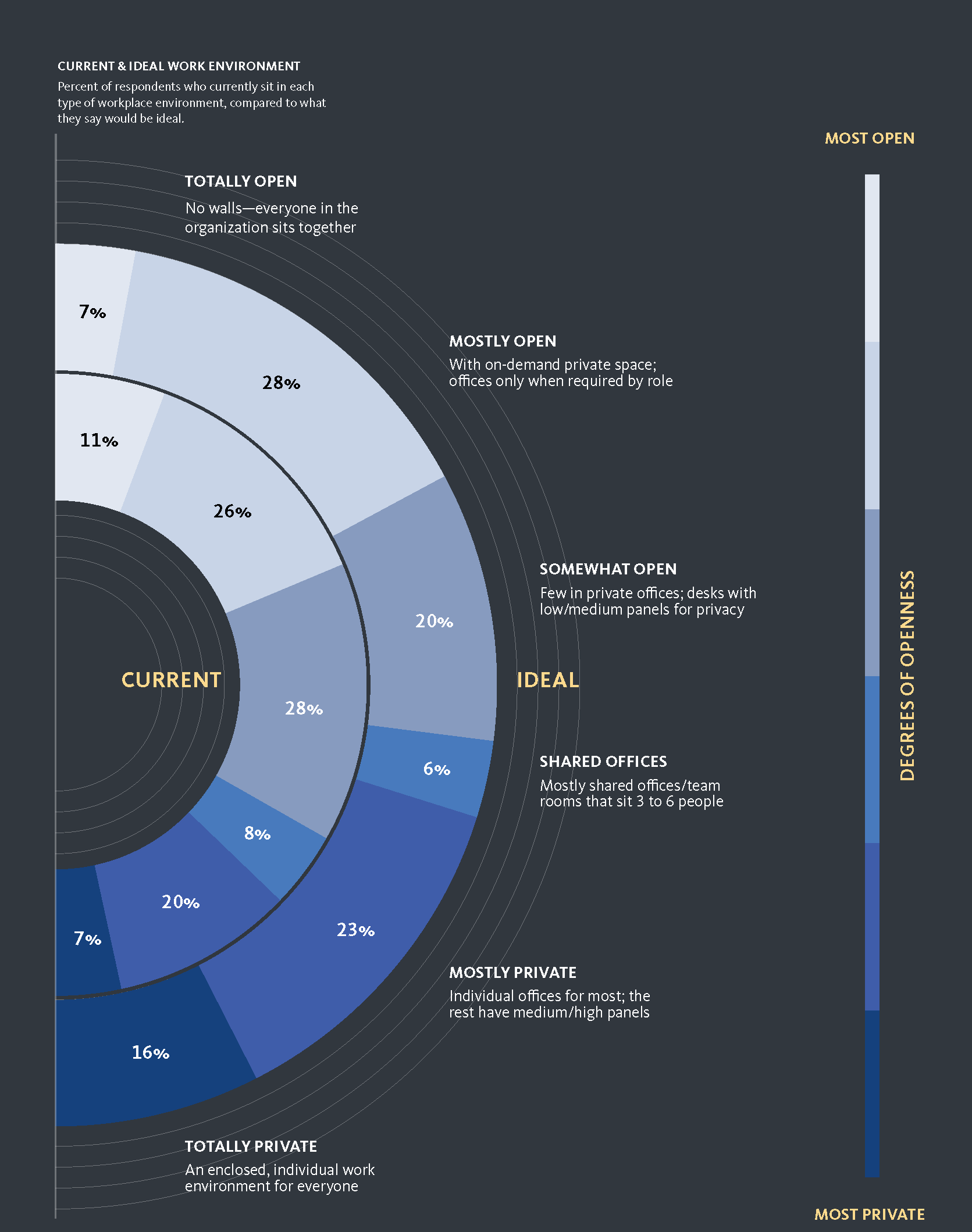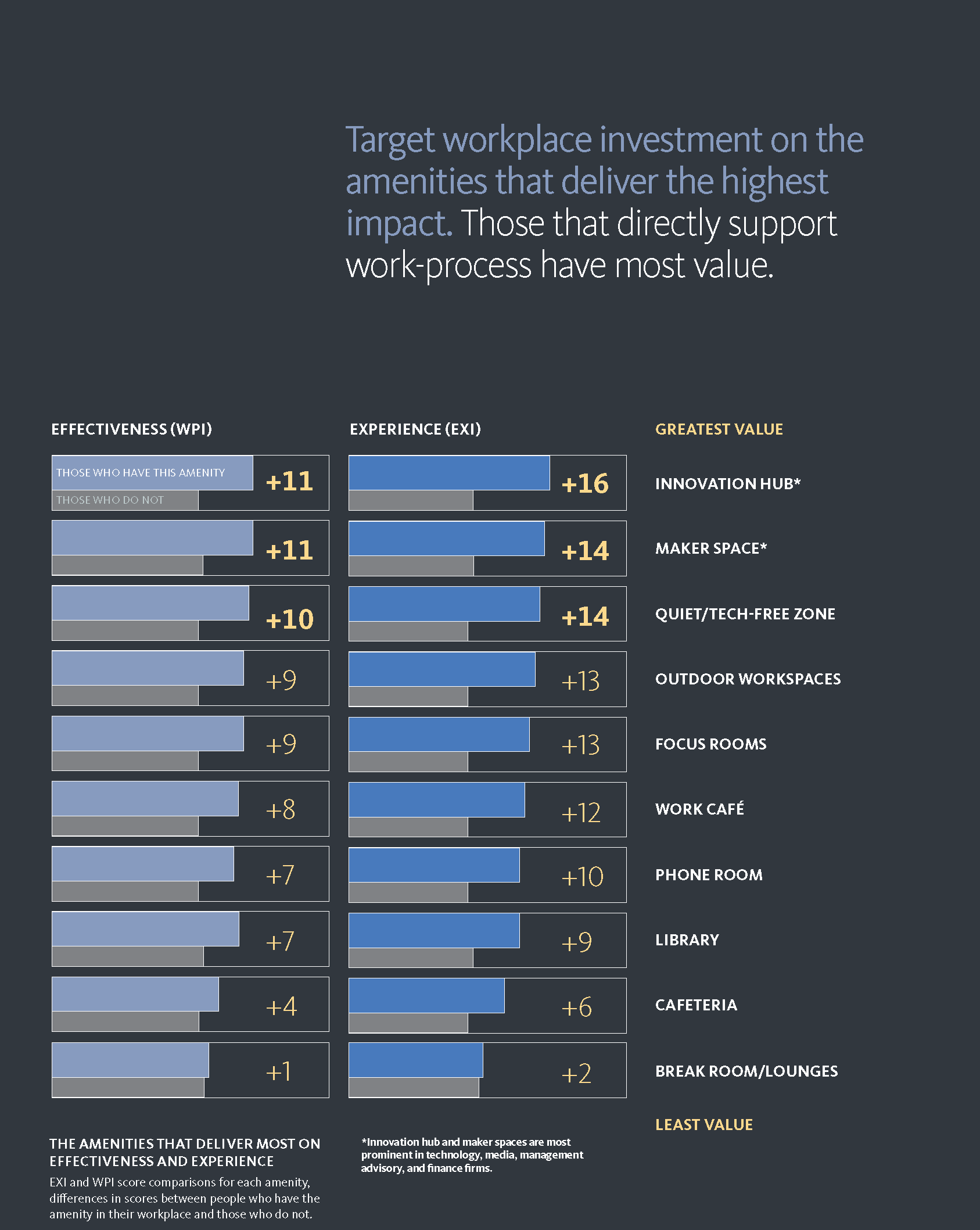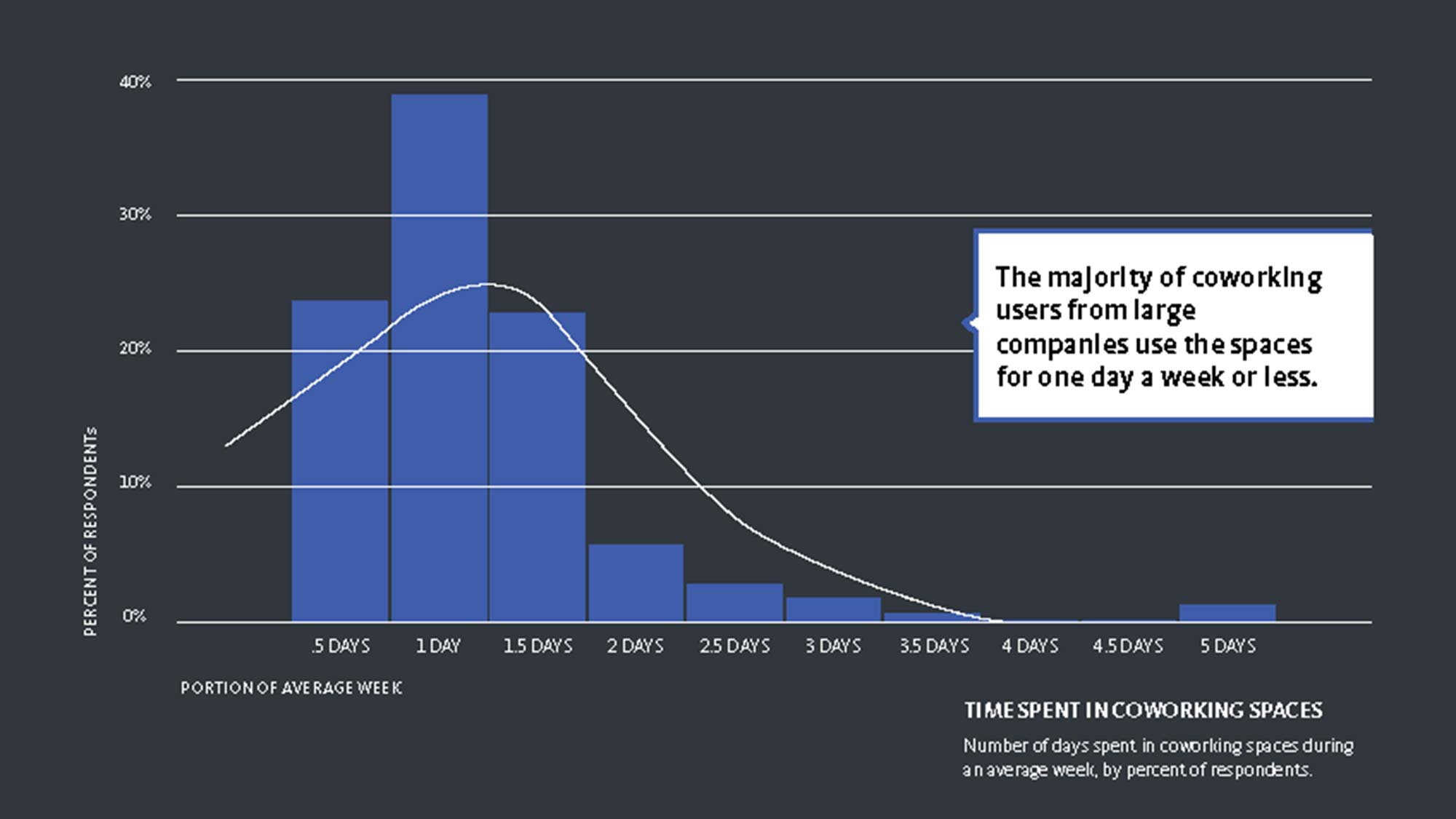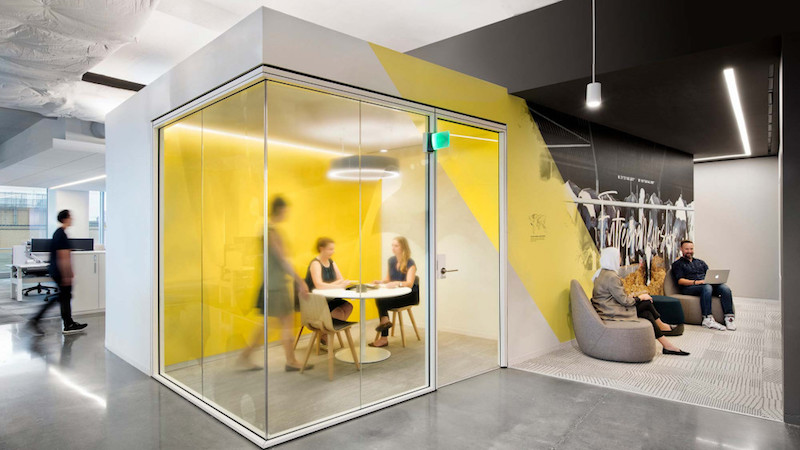It’s time to end the debate about whether offices should be an open or closed environment.
Over the years, companies’ workplaces and real estate strategies have shifted, from using enclosed offices with doors, to high-panel workstations, all the way to benching.
While all of this experimentation was done in an attempt to maximize productivity and effectiveness, what emerged was an ongoing, and mostly unsatisfying, debate on which was better — open or closed office plans.
Our 2019 U.S. Workplace Survey has given us some answers.
Gensler surveyed 6,000 offices workers for their input on these three questions: 1) exactly how open should their office be; 2) which amenities were most meaningful to them; and 3) what coworking spaces they wanted as part of their best prospective workplace.
Our data reveal what is truly going on in the current workplace, with insights on how workplace design can deliver new value to organizations.

1. How open should our office be?
The answer, based on our findings, is complicated. One office type doesn’t work for all, and it is much more nuanced. However, we did find that neither extreme is good. No one wants a completely open or closed workplace environment. Instead, companies should offer a combination of open and closed spaces with the “degree of openness” dependent on what can accommodate the individual and collaborative work needs of each organization.
Our researchers measured workplace preferences with different degrees of openness — ranging from “totally open” with no walls, to “totally private” where all employees have their own office. The findings revealed that very few people prefer either extreme, and 77 percent consider the ideal work environment to fall somewhere between totally open and totally private.
In other words, the best workplaces are designed to accommodate both individual and focus work, along with ample open spaces that can be used for more social, collaborative, work projects.

2. Which amenities should we invest in?
The new Gensler U.S. Workplace Survey finds that the amenities that directly impact a work-focused need are the most preferred. In other words, ping pong tables and unnecessary lounge areas aren’t valued by workers. The best amenity types include not only those spaces directly connected to collaboration and innovation, but also those where people can conduct individual or more focused work. The amenities with a non-work focus deliver the smallest performance gains in our sample. Lounges and break rooms, for example, had the least value.
Bottom line: It is not wise to invest in all amenities. Instead, employers should invest in work-focused amenities that directly fulfill the needs and priorities of people’s jobs. The most preferred amenities help people optimize their work performance.
3. Should coworking be considered as part of our real estate strategy?
Fourteen percent of respondents in our survey of 6,000 office workers said that they used coworking space as part of their workweek. All of these respondents worked for companies of 100 people or more and most are in manager positions or higher.

There is a fast-rising body of “enterprise” employees using coworking spaces as part of their daily work options. This uptick in coworking by employees at larger companies — who already have a primary work office — is essential to understanding the changing work styles of the U.S. worker.
So why are people electing to take advantage of access to coworking space? Many times an employee’s work will call for offsite work. In these cases, coworking spaces function as a high-value amenity by providing an alternative workplace away from home. What is interesting is that the data suggest that when employees’ primary workspaces include better-designed collaborative spaces, the use of coworking spaces decreases.
The 2019 U.S. Workplace Survey clearly shows that employers should seriously consider coworking as a part of their real estate strategy. It is not an either/or issue, but a supplement like other work-focused amenities. However, the optimal benefit of coworking occurs when coworking is limited to one or two days per week. Full-time use of a coworking location actually drives down effectiveness of the individual.
It is clear that companies that provide a range of workspace options will have an advantage recruiting the best of the best in workforce talent.
More from Author
Gensler | Oct 21, 2024
3 surprises impacting the return to the office
This blog series exploring Gensler's Workplace Survey shows the top three surprises uncovered in the return to the office.
Gensler | Jun 26, 2024
5 ways ESG can influence design and create opportunities
Gensler sustainability leaders Stacey Olson, Anthony Brower, and Audrey Handelman share five ways they're rethinking designing for ESG, using a science-based approach that can impact the ESG value chain.
Gensler | May 20, 2024
10 spaces that are no longer optional to create a great workplace
Amenities are no longer optional. The new role of the office is not only a place to get work done, but to provide a mix of work experiences for employees.
Gensler | Apr 15, 2024
3 ways the most innovative companies work differently
Gensler’s pre-pandemic workplace research reinforced that great workplace design drives creativity and innovation. Using six performance indicators, we're able to view workers’ perceptions of the quality of innovation, creativity, and leadership in an employee’s organization.
Gensler | Mar 13, 2024
Trends to watch shaping the future of ESG
Gensler’s Climate Action & Sustainability Services Leaders Anthony Brower, Juliette Morgan, and Kirsten Ritchie discuss trends shaping the future of environmental, social, and governance (ESG).
Gensler | Feb 15, 2024
5 things developers should know about mass timber
Gensler's Erik Barth, architect and regional design resilience leader, shares considerations for developers when looking at mass timber solutions.
Gensler | Jan 15, 2024
How to keep airports functional during construction
Gensler's aviation experts share new ideas about how to make the airport construction process better moving forward.
Gensler | Dec 18, 2023
The impacts of affordability, remote work, and personal safety on urban life
Data from Gensler's City Pulse Survey shows that although people are satisfied with their city's experience, it may not be enough.
Gensler | Nov 16, 2023
How inclusive design supports resilience and climate preparedness
Gail Napell, AIA, LEED AP BD+C, shares five tips and examples of inclusive design across a variety of building sectors.
Gensler | Oct 16, 2023
The impact of office-to-residential conversion on downtown areas
Gensler's Duanne Render looks at the incentives that could bring more office-to-residential conversions to life.
















